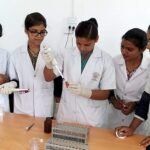As a firefighter, you put your life on the line every day. You may always feel apprehensive about never returning home every morning you say goodbye to your loved ones. While the fear of dying on duty becomes a part of your existence, you hardly realize that there’s another threat lurking in the shadows. Cancer is the culprit you should watch out for.
Studies show that firefighters are at a higher risk for non-Hodgkin lymphoma, multiple myeloma, prostate, and testicular cancers. Statistics also identify cancer as the second leading cause of death among American firefighters.
The connection between firefighting and elevated cancer rates is alarming, making it essential to pay more attention to this occupational hazard. Awareness can help with timely diagnosis and early treatment to save these brave professionals.
We will highlight a few proactive safety measures that can reduce cancer risk for firefighters.
Understand the Cancer Risk
The firefighting environment entails more than the risk of burn and fall injuries. It exposes firefighters to a mix of carcinogens, including formaldehyde, benzene, and polycyclic aromatic hydrocarbons. These toxins enter the body through inhalation and absorption through the skin. Prolonged exposure can elevate the risk of cancer.
Did you know that the lifesaving firefighting form can also lead to toxin exposure? Aqueous Film Forming Foam (AFFF) is loaded with PFAS chemicals that stay in the environment and the human body forever. Over time, they can cause various types of cancers. In recent years, a slew of AFFF lawsuits have been filed by firefighters suffering from the aftermath of PFAS exposure.
TruLaw notes that victims should raise a voice against manufacturers for failing to warn against the potential risk of PFAS exposure. All you need is evidence linking your condition to AFFF exposure to make the manufacturer pay for your pain and suffering. Since firefighters bear this exposure as a part of their work, establishing this link is easy.
Use Robust Personal Protective Equipment
Awareness is the first step to fighting against the cancer risk as a firefighter, but it is hardly enough. Proactive steps are about reducing your exposure to harmful carcinogens as far as possible. It is possible only if you build your defenses against the smoke and fumes with proper personal protective clothing and equipment.
Fortunately, fire departments in the US provide firefighters with advanced personal protective equipment. Modern turnout gear is designed to protect the wearer against thermal and chemical threats. Additionally, you can rely on respiratory protection masks with advanced filtration capabilities to prevent inhalation of carcinogenic particles.
Ensure Rigorous Decontamination Protocols
Another step that fire departments can implement to reduce cancer risk for personnel is to ensure stringent decontamination procedures. Thorough decontamination processes after a firefighting operation can minimize the absorption of carcinogens. It includes showering and changing into clean clothing to get rid of toxins on the skin and PPE.
Fire departments should also provide decontamination kits on-site so that personnel can clean themselves immediately. Minimizing exposure to contaminants is the best way to safeguard oneself from the risk of cancer. Isolating contaminated gear is also crucial because lingering toxins on their surface are dangerous.
Provide Ongoing Training on Hazard Awareness
According to 2021 statistics, an estimated 60,750 firefighter injuries were sustained in the line of duty. The threat of chemical exposure is far greater because toxins conceal themselves within and return after years in the form of a fatal disease like cancer. Making hazard awareness a part of safety training can cover both fronts.
Training should include awareness regarding the types of carcinogens present in firefighting scenarios. Further, firefighters should recognize the importance of proper PPE usage and adopt safe work practices. Ongoing training programs are worthwhile because they ensure that all personnel remain vigilant about limiting their cancer risk.
Encourage Regular Health Monitoring and Screenings
Firefighters live on the edge when it comes to cancer risks because they face exposure to toxins, no matter how many precautions they take. Departments should encourage regular health monitoring and cancer screenings for the early detection of health issues. They can implement periodic medical check-ups and screening camps at work to ensure adherence.
Early intervention can improve the chances of successful treatment for cancer patients. The World Health Organization notes that delayed or inaccessible cancer care leads to greater problems associated with treatment, a lower chance of survival, and higher costs of care. Firefighters should continue with these schedules even after retirement.
In conclusion, higher cancer risk is a sobering reality for firefighters because exposure to carcinogens is a part of their job. However, proactive measures to minimize exposure and get early diagnoses can help save lives. While firefighters should be aware and cautious, firefighting departments must also do their bit to curb work hazards for their employees. They should join hands to win the war against cancer.






